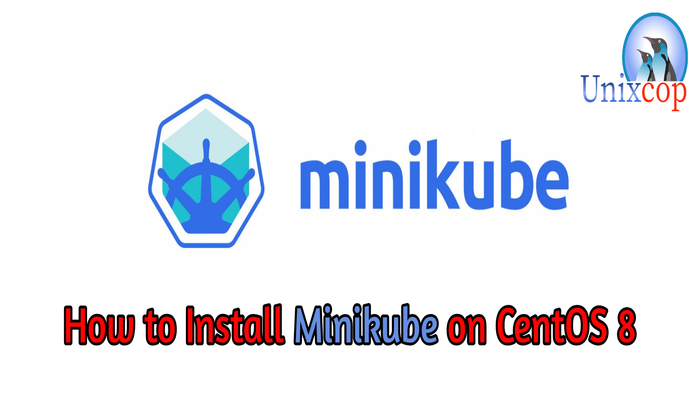Introduction
Minikube is open source software for setting up a single-node Kubernetes cluster on your local machine. The software starts up a virtual machine and runs a Kubernetes cluster inside of it, allowing you to test in a Kubernetes environment locally.
Minikube is a tool that runs a single-node Kubernetes cluster in a virtual machine on your laptop.
In this tutorial we will show you how to install Minikube on CentOS 8.
Prerequisites
- A system running CentOS 8
- A user account with sudo privileges.
- docker has more than 1899MiB for Kubernetes
Installation
Just follow the steps below to setup the Minikube correctly.
- Update your system
sudo dnf update -y- Install KVM Hypervisor because you are going to run the single node cluster inside a virtual machine, you need to set up a virtualization software.
Note: We will show you how to install quickly the KVM Hypervisor.
If you want to get more details with installation of KVM on your Linux machine, Please visit the link below.
- Start by installing the required packages Then start and enable the libvirtd process.
sudo dnf -y install epel-release
sudo dnf -y install libvirt qemu-kvm virt-install virt-top libguestfs-tools bridge-utils
sudo systemctl start libvirtd
sudo systemctl enable libvirtd- Add your sudo user to the libvirt group.
sudo usermod -a -G libvirt $(whoami)- open the configuration file of the virtualization.
sudo vim /etc/libvirt/libvirtd.conf- Make sure that that the following lines has the same values as shown below.
unix_sock_group = "libvirt
unix_sock_rw_perms = "0770"- Restart the libvirtd service
sudo systemctl restart libvirtd- Install the latest Minikube package
wget https://storage.googleapis.com/minikube/releases/latest/minikube-linux-amd64- Give it the file executive permission
chmod +x minikube-linux-amd64- Move it to the /usr/local/bin
sudo mv minikube-linux-amd64 /usr/local/bin/minikube- Verify the installation of Minikube by checking its version
minikube version
- Install Kubectl by downloading the package, Run the following command
curl -LO https://storage.googleapis.com/kubernetes-release/release/`curl -s https://storage.googleapis.com/kubernetes-release/release/stable.txt`/bin/linux/amd64/kubectl- Give the executive permission for Kubectl
chmod +x kubectl- Move it to the same directory where you stored Minikube which is /usr/local/bin
sudo mv kubectl /usr/local/bin/- Also verify Kubectl by checking its version
kubectl version --client -o json
- Starting Minikube using Minikube start command and start a single node cluster inside a virtual machine by running the below commands
sudo groupadd docker
sudo usermod -aG docker $USER
sudo usermod -aG docker $USER && newgrp docker
sudo systemctl start docker
minikube startNOTE:
If you are running minikube within a VM, consider using –driver=none
So just follow the above steps but replace the minikube start command with minikube start –driver=none
So it will be like that:
sudo usermod -aG docker $USER
sudo usermod -aG docker $USER && newgrp docker
sudo systemctl start docker
minikube start --driver=noneAccording to : https://minikube.sigs.k8s.io/docs/reference/drivers/none/
Access Minikube web console
If you want to activate minikube dashboard and login to the console you have to follow the steps below:
- First check the status of Minikube with command
minikube status- List the addons enabled with kubectl
minikube addons list- Start the minikube
minikube start
- Then activate the Dashboard of Minikube with the command below
minikube dashboardThis command will Create a link taht make the localhost listens on a random port from Minikube ports as shown

- Copy the link then go to your browser and paste it, You will be directed automatically to the Minikube Dashboard as shown.

- You can check The Kubernetes service with clicking on Service section on the left side as shown

Conclusion
In this article, you should have successfully installed Minikube on you CentOS 8.
Now you can enjoy with exploring all features of Kubernetes on your local machine.



